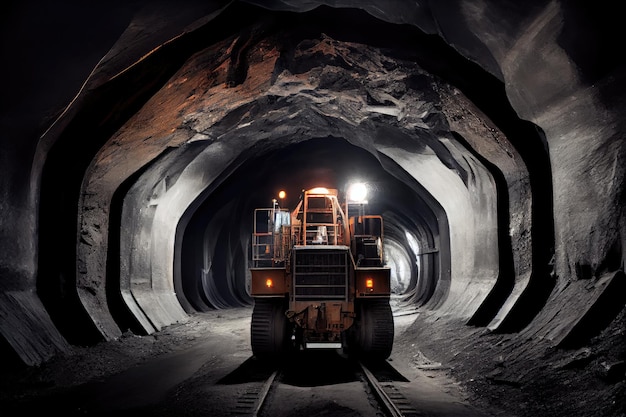India–US Trade Tensions Rise Over Steel and Auto Tariffs NMDC Limited reports a 38% drop in Q4 FY24 consolidated net profit RINL to Raise $23 Million Through Land Sales Amid Crisis

Underground (UG) mining production is expected to reach 31 million tonnes (MT) in the current fiscal year, which ends in March 2024, according to state-run Coal India (CIL).
The mining behemoth, which accounts for 90% of India’s coal production, also aims to scale this up further to 42 MT in FY25, which commences in April 2024.
In FY23, CIL produced more than 700 MT of critical resources, which are the mainstays of the power sector. Of this, production from underground mines stood at around 25 mt. India produced 34.85 mt of coal from UG mines, which accounted for 3.9% of the pan-India production of 893.19 mt in the same period.
Coal India Director (Technical) B Veera Reddy told a news media source, “We (CIL) prepared a 100-MT roadmap, and it is under implementation. Last year (FY23), we produced 25 MT and this year (FY24), it is 31 MT. In FY25, we aim to produce 42 MT. We have planned everything. The equipment has been procured and everything is being done per roadmap schedule.”
Mining experts say that UG mining entails higher costs than open-cast mining, with the cost per tonne being more than double. However, with growing mechanisation, such as the use of continuous miners, it’s possible to extract higher quantities of dry fuel from deposits deeper in the ground. Besides, it is more environment friendly, leading to less land and displacement of people.
The Jhanjra mine of Eastern Coalfields (ESL), a CIL subsidiary, is the country’s highest-producing mechanised underground mine with a 3.5 million tonnes per annum (mtpa) capacity.
Currently, coal produced from UG mines is around 4% of the total output, which the Coal Ministry aims to increase to 10% in the next seven years.
Reddy emphasised that underground mining’s advantage is minimal impact on environmental parameters such as land, water and air. It also does not disturb topsoil, forest cover or agriculture.
He pointed out that global coal production was around 8.5 billion tonnes (bt) last year. Of this, more than 50% comes from UG mining. In China, about 3.7-3.8 bt (of the total 4 bt output) comes from UG mining. In South Africa, it’s 50%, in the US (37%) and 20% in Australia.
On November 15 last year, Coal Secretary Amrit Lal Meena said the Ministry seeks to enhance production from underground coal mines to 100 mt by 2030 from the current 26 mt annually.
“Such mines have already been identified. We had constituted a high-level committee to suggest policy measures to promote underground mining. The committee has submitted its report, and the committee’s recommendations are with the Ministry. They are under different discussion stages, and we will shortly come out with a suitable policy framework,” he had informed.
Meena emphasised that the environmental impact of UG mining is lower compared to OC mining as large-scale deforestation is not required, and displacement of people, too, is significantly lesser. Besides, the loss of farmland also comes down.
Also Read : India’s coking coal port traffic up 10% in April-February of FY 2023-24 Kazakhstan can meet India's demands for rare-earths